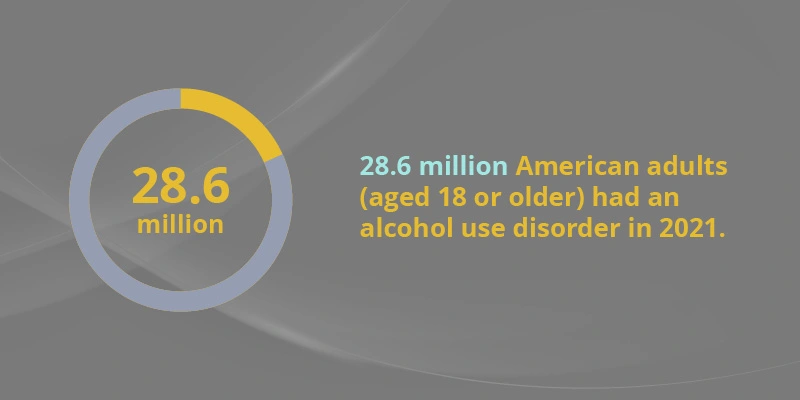Getting to the Basics: What Is Substance Use Disorder?
What is substance use disorder? What are the symptoms and risk factors? What treatment options are available? Find out here.
How Black Horse Health’s Substance Use Disorder Treatment Helps You Recover
At Black Horse Health, we understand that substance use disorders can often have devastating effects on an individual’s well-being – mentally, physically, emotionally, socially, and even financially.
Our team of skilled and compassionate specialists have over 100 years of combined experience, and we are committed to helping you or your loved one get the substance use disorder treatment you need.
With holistic and evidence-based wellness services like medical detoxification, medication-assisted treatment, yoga and meditation, and individualized therapy, we will create a treatment plan that best meets your unique set of symptoms.
Next Steps Toward Recovery
Learn more about our substance use disorder programs, other treatment opportunities, and how our Black Horse Health team of specialists can help you heal in this comprehensive article. Don’t hesitate to reach out to our team for more information or to begin your path to wellness today.

What is Substance Use Disorder?
Substance use disorder (SUD) is a condition where a person has difficulty controlling their use of drugs or alcohol, leading to negative consequences in their daily life. It is a real medical condition that affects millions of people worldwide. In fact, it impacted 46.3 million people aged 12 or older in 2021.1
A person with SUD may experience intense cravings and have a strong desire to continue using drugs or alcohol, even when it causes problems in their relationships, work, or health. SUD can lead to physical and psychological dependence, making it hard to stop using without professional help.
What is Substance Use Disorder: Key Diagnostic Criteria
Identifying the symptoms of substance use disorder is a crucial first step for providing support. Below are some criteria for diagnosing SUD.
Impaired Control
- Unsuccessful attempts to quit
- Persistent desire or cravings
- Using larger amounts over time
Social Impairment
- The neglect of important obligations
- Withdrawal from social activities or relationships
- Continued substance use despite causing social problems
Risky Use
- Driving under the influence
- Engaging in unprotected sex
- Taking risks that may harm oneself or others
Pharmacological Criteria
Diagnostic and Statistical Manual of Mental Disorders (DSM)
Severity Levels
What is Substance Use Disorder?: Determining Levels and Severity of Substance Use Disorder
- The amount and frequency of substance use
- Symptoms of cravings and withdrawal
- Inability to control or stop using the substance
Common Substances That Can Lead to SUD
Alcohol
- A strong desire to drink
- Difficulty controlling alcohol intake
- Withdrawal symptoms when attempting to quit
Nicotine
- Cigarettes
- Cigars
- Chewing tobacco
Opioids
Stimulants
- Cardiovascular problems
- Psychological disturbances
- Impaired social functioning
Marijuana
- A strong desire to use marijuana
- Difficulty controlling its use
- Withdrawal symptoms when discontinuing its use
What is Substance Use Disorder and How Does SUD Differ From Occasional or Recreational Substance Use?
- Their relationships
- Work
- Physical and mental well-being

What is Substance Use Disorder: Physical and Psychological Effects of Long-Term Substance Abuse
Damage to Organs and Body Systems
Weakening of the Immune System
Nutritional Deficiencies
Degeneration of Brain Function
Mental Health Disorders
Long-term substance abuse can make mental health conditions worse or even cause new ones. People might feel sad, worried, or scared all the time. Some might see things that aren’t there or believe things that aren’t true.
Cognitive Impairment
Emotional Instability
Social Isolation
Risk Factors That Can Increase the Likelihood of Developing SUD
Genetic Factors
Environmental Influences
Childhood Trauma
- Physical or emotional abuse
- Neglect
- Household dysfunction
Mental Health Challenges
Accessibility and Availability of Substances
Lack of Social Support
What is Substance Use Disorder: Impact on Relationships, Work, and Well-Being
Substance use disorder can have a profound impact on a person’s daily life. This can affect various aspects, such as relationships, work, and well-being. Here’s how:
Repercussions on Relationships
Impact on Work
- Attendance issues
- Difficulty concentrating
- Impaired decision-making
Effects on Mental and Physical Health
- Liver damage
- Heart issues
- Respiratory disorders
Financial Strain
Legal Consequences
- Driving under the influence
- Possessing illegal substances
- Involvement in violence
Social Isolation
People with SUD may distance themselves from social activities. The stigma associated with substance abuse can evoke feelings of shame and guilt. This pushes people to withdraw from social interactions. A lack of social support can worsen mental health issues and impede recovery efforts.

What is Substance Use Disorder: Potential Health Consequences and Medical Complications
Cardiovascular Complications
- Heart attacks
- Irregular heart rhythms
- Sudden cardiac death
Respiratory Problems
Liver Damage
- Alcoholic liver disease
- Cirrhosis
- An increased risk of liver cancer
Gastrointestinal Issues
Neurological Effects
- Brain shrinkage
- Memory problems
- Cognitive impairment
Infectious Diseases
- HIV/AIDS
- Hepatitis B
- Hepatitis C
Increased Risk of Accidents
What is Substance Use Disorder?: Tolerance, Withdrawal, and Cravings
Tolerance
Withdrawal
Cravings

Available Treatment Options and Their Effectiveness
Individuals struggling with SUD will often struggle to overcome their addictionThere are several available treatment options available, including:
Detoxification
Medication-Assisted Treatment (MAT)
Behavioral Therapies
Residential Treatment
Outpatient Treatment
- Individual counseling
- Group therapy
- Education sessions
- Support groups
Support Groups
Effectiveness of Treatment Options
- The person’s motivation to change
- The severity of addiction
- The presence of co-occurring disorders
What is Substance Use Disorder Prevention?
Education and Awareness
Promote Mental Health and Emotional Well-Being
Nurture Healthy Coping Mechanisms
Strong Support Systems
Implementing Policies and Regulations
- Rules about the age you have to be to buy alcohol or tobacco
- Controlling illegal drugs
- Restricting how substances are advertised
Early Intervention and Screening
- Regular health check-ups
- Screenings in schools
- Targeted interventions for vulnerable populations

What is Substance Use Disorder Treatment Like at Black Horse Health?
- Each person’s unique needs
- Substance use history
- Mental health
- Physical health
Medically Supervised Detoxification
Evidence-Based Therapies
- Cognitive-behavioral therapy (CBT)
- Art therapy
- Music therapy
- Dialectical behavioral therapy (DBT)
- Drama therapy
Medication-Assisted Treatment (MAT)
Individual and Group Counseling
- Share experiences
- Gain insights
- Receive guidance and support from both professionals and peers
Dual Diagnosis Care
Relapse Prevention
Contact Black Horse Health Today
Break free from the chains of addiction. Reach out to us now and take the first step towards a life of recovery and empowerment.
Resources
- https://www.hhs.gov/about/news/2023/01/04/samhsa-announces-national-survey-drug-use-health-results-detailing-mental-illness-substance-use-levels-2021.html#:~:text=46.3%20million%20people%20aged%2012,having%20a%20drug%20use%20disorder.
- https://www.ncbi.nlm.nih.gov/pmc/articles/PMC4523448/
- https://www.ncbi.nlm.nih.gov/pmc/articles/PMC3683251/#:~:text=The%20Diagnostic%20and%20Statistical%20Manual%20of%20Mental%20Disorders%20(DSM)%20provides,States%20communicate%20about%20mental%20disorders.
- https://www.niaaa.nih.gov/alcohols-effects-health/alcohol-topics/alcohol-facts-and-statistics/alcohol-related-emergencies-and-deaths-united-states
- https://nida.nih.gov/publications/research-reports/tobacco-nicotine-e-cigarettes/what-scope-tobacco-use-its-cost-to-society
- https://www.ncbi.nlm.nih.gov/pmc/articles/PMC4363846/#:~:text=Nicotine%20is%20well%20known%20to,consistently%20demonstrated%20its%20carcinogenic%20potential.
- https://nida.nih.gov/research-topics/trends-statistics/overdose-death-rates#:~:text=Overall%2C%20drug%20overdose%20deaths%20rose,overdose%20deaths%20reported%20in%202021.
- https://store.samhsa.gov/sites/default/files/pep20-06-01-001.pdf
- https://www.bumc.bu.edu/genetics/research/substance-abuse/#:~:text=SUDs%20have%20a%20strong%20genetic,%2C%20cocaine%2C%20opiates%20and%20cannabis.
- https://www.samhsa.gov/medications-substance-use-disorders


